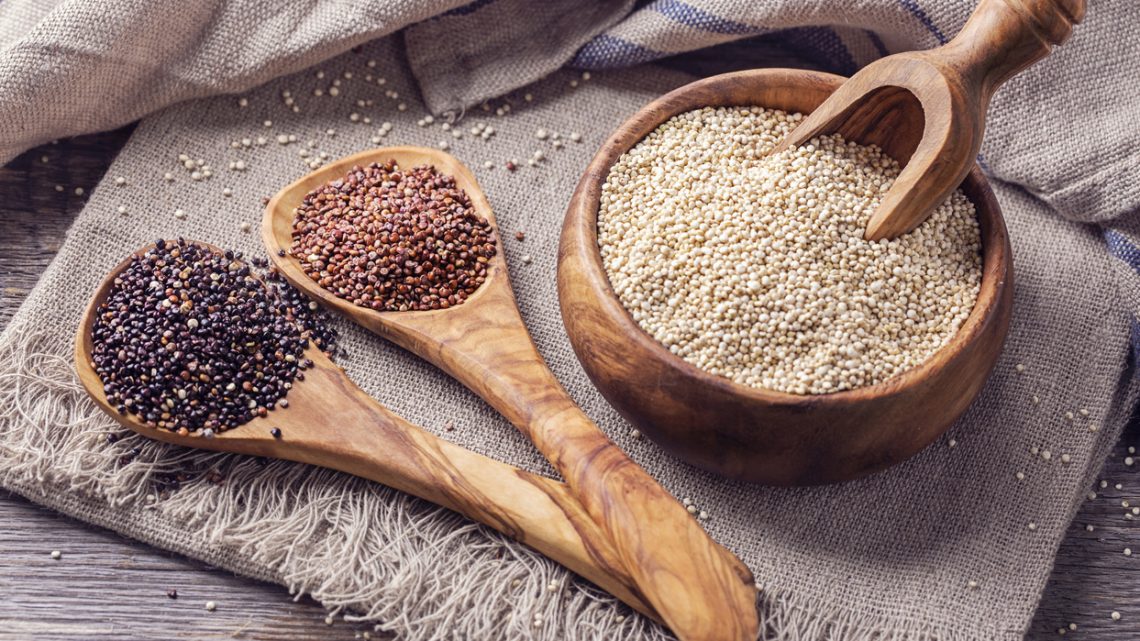If you’re like me, you’re always on the lookout for healthy foods that taste good and don’t require a lot of time or fuss to prepare. Read on if you haven’t yet discovered the beauty of quinoa.
What is quinoa?
Most commonly considered a grain, quinoa (pronounced keen-wa) is a high-protein plant originally cultivated by Incan tribes in the Andes Mountains of South America. According to Wikipedia, quinoa was used to sustain Incan armies, which frequently marched for many days. The Incas, who held the crop to be sacred, referred to quinoa as the “mother of all grains.” Tradition holds that the Inca emperor would sow the first seeds of the season using golden implements.
Since quinoa is not a grass, it’s technically not a grain (but the food world calls it a grain because it looks and cooks like grain). Quinoa is actually a seed of the Chenopodium plant, related to leafy green vegetables like spinach and Swiss chard. Quinoa leaves can be eaten as a leaf vegetable, or used as salad greens, but the commercial availability of quinoa greens is currently limited.
What’s the nutritional value?
Quinoa contains a balanced set of essential amino acids for humans, making it an unusually complete protein source among plant foods. It also contains good quantities of calcium, phosphorus, and iron. It is an excellent source of dietary fiber and phosphorus and is high in magnesium and iron (www.livestrong.com/article/245393-nutritional-value-of-quinoa/).
Quinoa is generally considered gluten-free and easy to digest. Because of its many great characteristics, quinoa is being considered a possible crop in NASA’s Controlled Ecological Life Support System for long-duration manned spaceflights.
How do I cook quinoa?
Quinoa in its natural state has a coating of bitter-tasting saponins, making it unpalatable. Most quinoa sold commercially in North America has been processed to remove this coating. Generally, cooking instructions suggest only a brief rinse before cooking.
Quinoa grains can be cooked the same way as rice and used in a wide variety of dishes. Quinoa has a light, fluffy texture when cooked, and its mild, slightly nutty flavor makes it a great alternative to rice, pasta or couscous.
A common cooking method is to bring 2 cups of water to a boil with 1 cup of grain, cover, and let simmer for 14–18 minutes or until the germ separates from the seed. For added flavor, vegetable stock can be substituted for water during cooking (www.whfoods.com/genpage.php?dbid=142&tname=foodspice).
Cooked quinoa is excellent in casseroles, soups, stir-fries, or cold in salads. Uncooked quinoa may be added to stews as you would barley or rice.
Alternatively, quinoa can cooked in fruit juice and serve as a high-protein breakfast cereal mixed with honey, nuts or berries; it is also sold as a dry product, much like corn flakes. Visit www.quinoa-recipes.com/index.html for recipes. If you like things a little spicy try this recipe.
Can I microwave it?
Yes. Quinoa.net recommends the following instructions:
Mix 1 cup quinoa and 2 cups water in a 2 quart microwave bowl. Cook on high 100% for 5 minutes and 60% for 8 minutes. Let stand for a few minutes and voila—perfect quinoa!
What else can I do with quinoa?
Quinoa flour can be used in making pasta and a variety of nutritious baked goods such as whole grain pancakes, bread, muffins and crackers.
Quinoa seeds can be sprouted and eaten raw in salads and sandwiches. To sprout the seeds, soak about 1/3 cup seeds in a jar for 2-4 hours, then drain and rinse the seeds twice a day for 2-4 days. When the sprouts are about 1 inch long, place them near a window for chlorophyll to develop, which will give them a vibrant green color (chetday.com/quinoa.html).
Where can I buy it?
Depending on where you live, you may or may not be able to purchase quinoa in your local grocery store (it never hurts to ask for it). Alternatively, quinoa is available at health food stores throughout the year.
How do I store it?
Store quinoa in an airtight container. It will keep for a longer period of time, approximately 3-6 months, if stored in the refrigerator.










